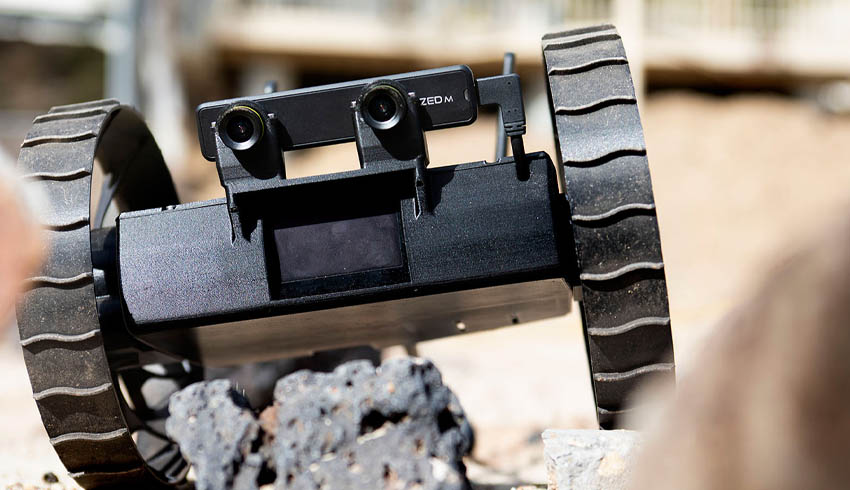
JPL developed the Autonomous Pop-Up Flat Folding Explorer Robot (A-PUFFER) to scout regions on the moon and gain intel about locations that may be difficult for astronauts to investigate on foot, like hard-to-reach craters and narrow caves.
This iteration of A-PUFFER includes several modifications to the previous design. In addition to larger wheels, each robot has an upgraded onboard computer with a wireless radio for communication and a stereo camera for sensing the environment in front of it.
In February 2020, engineers began testing the upgraded A-PUFFER robots and their new capabilities. Because each A-PUFFER is small enough to fit in a shoebox, multiple robots can be deployed to work together and collaborate on their task.
Jean-Pierre de la Croix, the A-PUFFER project manager at JPL, said, "Collaborative, multi-rover autonomy has the promise to unlock new missions that are either too risky for a single rover or simply require more than one rover to achieve."
The team of three successfully trekked the sandy and rocky terrain of JPL's Mars Yard while simultaneously mapping the environment using sensors. Their maps were shared with a base station and merged into an integrated map of the Mars Yard.
Together, this system demonstrates a capability that could robustly map parts of the moon that haven't been mapped before.
NASA will continue to test the robots and their autonomous capabilities. A-PUFFER technology could make its way to the moon on a commercial lunar lander in the next few years.
Receive the latest developments and updates on Australia’s space industry direct to your inbox. Subscribe today to Space Connect here.









